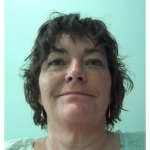Biography
I received my Ph.D. from University Louis Pasteur, ULP, Strasbourg, in 1989 and got the permanent position (CR1) in 1993 in the CNRS UPR 416 laboratory of Professor G. Vincendon until 1999. In 2000, I joined the INSERM U595 directed by Dr. J.-C. VOEGEL at the Faculty of Medicine in the team lead by H. LESOT: « Dental development and engineering ». In 2008, I joined the team lead by Dr. Nadia Benkirane-Jessel: « Active biomaterials and tissue engineering”. Since the 1st January 2013, the team lead by Dr Benkirane-Jessel became UMR 1109, « Osteoarticular and Dental Regenerative Nanomedicine ».
Scientific summary
Tooth engineering is a major challenge in regenerative medicine. In our research unit, we have developed a dental engineering model using re-associations between epithelial and mesenchymal cells that lead to in vitro crown formation, epithelial histogenesis and differentiation of odontoblasts and ameloblasts (Hu et al., 2005). After implantation of these cultured re-associations subcutaneously in adult mice, it is possible to obtain the beginning of the formation of roots, anchoring system, and also a better apposition of dentin and enamel (Hu et al., 2006). The mineralization of the different matrices: predentin/dentin, enamel and cementum is normal in the implanted re-associations (Nait Lechguer et al., 2011).
The vascularization is critical for organogenesis and tissue engineering. In implanted re-associations, we demonstrated that newly formed blood vessels originated from the host that allowed their survival, and afforded conditions for organ growth, mineralization, and enamel secretion (Nait Lechguer et al., 2008).
The innervation is important for the functionality of the tooth. We observed, after co-implantation of re-associations and trigeminal ganglia in immunodeficient mice « Nude », the presence of axons in the pulp, many associated with blood vessels (Keller et al., 2012a).
Our goal is to replace dental embryonic mesenchymal cells by other cells capable of mimic dental development. So a better understanding and knowledge of this compartment is essential (Keller et al., 2012b). In order to replace the mesenchymal compartment and reproduce the different stages of tooth development, we turned to other cellular resources easier to access, such as adult and embryonic stem cells or induced pluripotent stem cells (iPS) (Keller et al., 2011).
Hu B., Nadiri A., Bopp-Kuchler S., Perrin-Schmitt F., Lesot H. (2005) Dental Epithelial Histomorphogenesis in vitro. J. Dent. Res. 84, 521-525.
Hu B., Nadiri A., Kuchler-Bopp S., Perrin-Schmitt F., Peters H. and Lesot H. (2006) Tissue engineering of tooth crown, root, and periodontium. Tissue Eng. 12, 2069-2075.
Nait Lechguer A., Kuchler-Bopp S., Hu B., Haïkel Y. and Lesot H. (2008) Vascularization of engineered teeth. J. Dent. Res. 87, 1138-1143.
Nait Lechguer A., Couble M.L., Labert N., Kuchler-Bopp S., Keller L., Magloire H., Bleicher F. and Lesot H. (2011) Cell differentiation and matrix organization in engineered teeth. J. Dent. Res. 90, 583-589.
Keller L., Kuchler-Bopp S., Mendoza S.A., Poliard A. and Lesot H. (2011) Tooth engineering: searching for dental mesenchymal cells sources. Frontiers in Physiology 4, 7.
Kuchler-Bopp S., Keller L., Poliard A. and Lesot H. (2011) Tooth Organ Engineering: Biological Constraints specifying experimental approaches. Regenerative Medicine and Tissue Engineering; From Cells to Organs/Book 2. In press.
Keller L., Kuchler-Bopp S. and Lesot H (2012a) Whole tooth engineering and cell sources. In Stem cells in craniofacial development, regeneration and repair. Irma Thesleff and George Huang eds. Wiley-Blackwell, John Wiley & Sons. In press.
Keller L.V., Kuchler-Bopp S. and Lesot H. (2012b) Restoring physiological cell heterogeneity in the mesenchyme during tooth engineering. Int J Dev Biol. 56, 737-746.




Commentaires récents